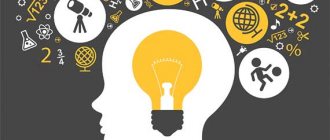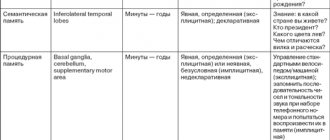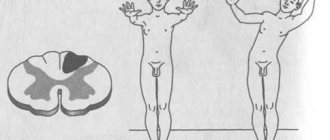Human speech belongs to the highest cortical functions; in order to pronounce the simplest sentence, the integrative activity of many parts of the brain and the vocal apparatus is required. This is the most important condition for communication, without which it is impossible to communicate with your own kind. Features of speech directly depend on education and horizons. Speech impairment in an adult always indicates a serious illness. Speech disorders can be congenital or acquired.
At CELT you can get advice from a neurologist.
- Initial consultation – 4,000
- Repeated consultation – 2,500
Make an appointment
Congenital disorders begin in early childhood and accompany a person throughout his life, practically impossible to correct. Acquired speech disorders always have a pathological cause, organic or functional. Organic causes include damage to the structures of the brain and speech apparatus. Functional include various environmental factors that temporarily disrupt the functioning of the nervous system. These are stress, infections, trauma, mental illness.
The following types of speech disorders are distinguished:
- change in tempo - acceleration (tachylalia) or deceleration (bradylalia);
- nasality;
- stuttering;
- dyslalia or tongue-tiedness - “swallowing” of syllables or letters, slurred and unclear speech;
- aphasia or the inability to speak, which in turn is divided into several types - motor, sensory, -
- conductive or conductive, acoustic-mnestic, optical-mnestic, total;
- dysarthria - impaired articulation;
- oligophasia (“few words”) - a condition after an epileptic seizure, when a person is deafened by the convulsions he has experienced and speaks little and in monosyllables;
- mutism (silence);
- dysphonia (hoarseness) or aphonia (lack of voice).
Only a doctor can accurately determine the type of speech disorder; a complete diagnosis sometimes requires a neurolinguistic examination performed by a psychologist and speech therapist. Almost always it is necessary to study the characteristics of blood flow, the affected area, the site of injury, or to identify an infectious or toxic agent.
Change of pace
A normal speech rate is 10 or 14 words per minute. The most common reason for a change in pace is emotions or mental disorders. Stressful influences - an unfamiliar environment, communication with an authoritarian person, an argument - can cause both acceleration and deceleration. Long-term acceleration of speech is observed in affective psychoses (the old name is manic-depressive) and other conditions when thinking is accelerated. Speech also accelerates in Parkinson's disease, accompanied by shaking paralysis. The rhythm and fluency of pronunciation suffers.
Slow speech with a small vocabulary is typical for persons with mental retardation or dementia that has developed as a result of various diseases of the nervous system. Words and sounds are drawn out, pronunciation is unclear, wording is primitive or incorrect.
Nasality can be a consequence of both a displacement of the nasal septum and paralysis of the muscles of the palate. A transient nasal sound is familiar to everyone; it happens with a severe runny nose. If there is no respiratory infection, then nasality is a reason to urgently consult a doctor.
Stuttering or logoneurosis
Develops in adults after severe fright or unbearable stress against the background of congenital insufficiency of the speech apparatus. The reasons may be outwardly harmless, but affect concepts that are important to a person - love, affection, family feelings, career aspirations.
The basis is a neurotic disorder. Logoneurosis often intensifies in situations of tension - at crucial moments, when speaking in public, during an exam, during a conflict. Several unsuccessful attempts or tactless behavior of others can lead to a fear of speech, when a person literally “freezes” and cannot utter a word.
Logoneurosis manifests itself as long pauses in speech, repetitions of sounds, syllables or entire words, as well as spasms of the lips and tongue. Trying to “skip” a difficult place dramatically increases stuttering. At the same time, there are no specific words or sounds on which a person stumbles; speech may stop on any word.
Stuttering is always accompanied by respiratory neurosis, when respiratory spasms occur. Almost always, along with the fear of speech, a person is worried about anxiety, decreased self-esteem, internal tension, sweating, and sleep disorders. Additional movements in the form of tics of the facial muscles, movements of the arms and shoulder girdle are common. Successful treatment of stuttering is possible at any stage; it is important to consult a doctor in time.
Rules for speech formation
Classes with a specialist allow children to develop literate, phonetically clear speech. But such events will not be enough. The speech therapist only helps with sound production. Everything else depends on the child and parents.
In order for speech to be successfully formed, the following rules must be observed:
- You should not scold your child for slurred speech, you just need to carefully correct it.
- Simple exercises should be shown.
- There is no need to focus on mistakes or stumbles.
- It is necessary to have a positive attitude towards classes with a speech therapist.
- Parents also need to watch their speech.
Aphasia
This is a violation of the structure of speech or understanding of its meaning.
Motor aphasia is a sign of damage to Broca's area or the lower parts of the frontal lobe. The person understands the spoken speech, but cannot say anything. Sometimes individual words or sounds break through, often obscene. This speech disorder is almost always accompanied by motor disorders in the form of paralysis of the right limbs. The cause is blockage of the superior branch of the middle cerebral artery.
Sensory aphasia is the inability to understand the meaning of speech, develops when the temporal gyrus of the hemispheres or Wernicke's area is damaged. The person does not understand the spoken speech, but fluently pronounces a set of words devoid of any meaning. The handwriting remains the same, but there is no essence in what is written. Often combined with visual impairments, the person is not aware of his defect. The cause is blockage of the lower branch of the middle cerebral artery by an embolus or thrombus. Conductive or conductive aphasia - a person understands speech, but cannot repeat anything or write from dictation. Speech consists of many mistakes that a person persistently tries to correct, but cannot. The white matter of the brain in the supramarginal gyrus is affected.
Acoustic-mnestic - a person cannot pronounce long complex phrases, making do with a minimal primitive set of words. It is extremely difficult to find a word. Develops with damage to the left temporal region, characteristic of Alzheimer's disease.
Optical-mnestic - a person recognizes objects, but cannot name or describe them. The loss of simple concepts from everyday life impoverishes both speech and thinking. Develops in toxic and dyscirculatory encephalopathies, as well as brain tumors.
Total aphasia - there is no ability to understand speech, nor to say or write anything. Characteristic of cerebral infarctions in the middle cerebral artery basin, often accompanied by paralysis, visual impairment and sensitivity. When blood flow through the middle cerebral artery is restored, speech may be partially restored.
Classification of disorders in adults
Similar to childhood dysfunctions, pathology is divided into types according to its manifestations and symptoms. Experts identify the following expressive speech disorders:
- aphasia;
- alalia;
- bradyllalia;
- dysarthria;
- dysorthography, dysgraphia;
- dyslexia, dyslalia;
- stuttering;
- delayed speech development, or SRD.
The characteristics of aphasia are the same as in childhood. Speech impairment is caused by damage to various parts of the brain. Depending on the location of the pathological process, various symptoms come to the fore. Each type of aphasia has common and individual characteristics. To one degree or another, writing and reading impairments always appear. If pathological changes are associated with age-related changes, already formed speech skills disappear.
Our doctors
Novikova Larisa Vaganovna
Neuropathologist, Candidate of Medical Sciences, doctor of the highest category
Experience 39 years
Make an appointment
Pankov Alexander Rostislavovich
Neurologist
40 years of experience
Make an appointment
Dysarthria
Dysarthria is a violation of pronunciation or articulation due to paralysis of the bulbar muscles, dysfunction of the facial muscles. The motor skills of speech, the pronunciation of sounds, the rhythm of breathing, and intonation coloring are impaired. It becomes difficult to understand what the person wants to say. People around you notice dysarthria. The person slurs his speech, speaks unclearly, and slurs simple words. The meaning and tempo most often do not change, and the strength of the voice is impaired. This disorder is always caused by an organic cause - impaired blood flow, infection or intoxication. In case of such a disorder in an adult, an urgent need to contact a neurologist to find out the cause. There may be a tumor of the nervous system, trauma, hemorrhage or ischemia (oxygen starvation). Dysarthria manifests itself in multiple sclerosis, amyotrophic lateral sclerosis, Parkinson's disease, myotonia, cerebral atherosclerosis, syringobulbia and many other nervous diseases. In healthy people, dysarthria is observed in a state of deep intoxication.
Dysarthria resulting from diseases has several forms:
- bulbar, caused by damage to the nuclei of the cranial nerves, occurs with cerebrovascular accidents, manifests itself as a single slit sound;
- pseudobulbar (damage to one side of the speech muscles), which occurs when the pathways from the cerebral cortex to the nuclei in the brain stem are damaged, manifests itself as slurred, slurred speech with the inability to pronounce hissing and whistling sounds;
- extrapyramidal, when the nerve nuclei located in the subcortex are affected, manifested by involuntary guttural cries;
- cerebellar - “chanted” speech;
- hemispheric or cortical, when lesions occur in the cortex, the use of all linguistic means becomes difficult.
Neurologists and speech therapists are involved in the diagnosis and treatment of diarthria.
Prognosis and prevention
Speech disorders can be corrected if this work is started at an early age or early stage. The people around us and the efforts of the person himself play an important role in improving the condition. If the disorder is identified in a timely manner and treatment is started, speech can be normalized. Such children continue to study in regular schools and get along well with the kids.
In complex forms of the disease, achieving improved speech is not easy. You can only correct your speech function. In such situations, the range of measures is broader, and the patient needs to visit a specialized institution. It is necessary to maintain the continuity of speech therapy organizations: go to special kindergartens, correctional schools. It is also important to be treated in psychoneurological hospitals if it was prescribed by a doctor.
Prevention involves implementing effective measures from birth. The child must be protected from neutroinfection, skull and brain injuries. It should not be affected by toxic factors.
It must be taken into account that success comes with a systematic approach and comprehensive organization of events. Along with traditional treatment, unconventional methods should not be forgotten. It is important to carry out physical activity activities. Using a variety of methods can provide excellent results if used correctly.
Mutism
The etiology of mutism is complex - silence develops both in people with intact brain and speech apparatus, and in many brain lesions.
Sometimes mutism is caused by atrophy of Broca's area or other brain lesions that are not immediately detected. Akinetic mutism develops with the loss of all voluntary movements, including speech. Such mutism has been described in coma, AIDS, and neuroleptic syndrome. This is a condition in which a person looks intently into the eyes of his interlocutor, but cannot move or utter at least one sound. A similar condition is observed in the acute period of severe traumatic brain injury, when not only speech is impaired, but also consciousness, along with other voluntary functions.
Often the cause of mutism is mental illness, especially hysteria, deep depression, catatonia (special movement disorders when a person looks like a wax doll) with endogenous major psychoses. Hysterical mutism occurs more often in women and is accompanied by demonstrative behavior aimed at achieving one’s goals.
Treatment
Health care
In cases where the absence of speech is due to damage to the central nervous system, therapy is prescribed aimed at stimulating the development or restoration of speech function. To enhance the activity of the nervous system, nootropic drugs, antioxidants, cerebroprotectors, and vitamin complexes are indicated. For destructive forms of behavior, antipsychotics and antidepressants are prescribed.
At the stage of medical rehabilitation, patients undergo exercise therapy, occupational therapy, and physiotherapeutic treatment (electromyostimulation, medicinal electrophoresis, magnetic therapy). In case of surdomutism, in some cases, hearing aids using hearing aids and cochlear implantation are effective.
Psychocorrectional support
Children with developmental delays need classes with a defectologist and psychologist. Art therapy, play therapy, and neuropsychological correction help to overcome the lack of speech. As part of complex therapy for ASD, sensory integration and ABA therapy are used. Since the role of the family in the development of a child’s speech is extremely important, it is important to provide psychological counseling to parents.
Speech therapy assistance
Patients with various disorders resulting in lack of speech receive differentiated speech therapy assistance. Correctional training for children with mental retardation and motor alalia is aimed at stimulating speech; includes fine motor skills training, phonetic rhythm, Tomatis therapy and other methods. In order to develop communication skills, non-verbal autistic children are taught using the PECS system.
Speech therapy massage, breathing and articulation exercises play an important role in the complex correction of dysarthria. Classes to overcome motor aphasia involve working on disinhibiting oral speech, conducting sound-letter analysis of words, and overcoming articulatory apraxia. Classes with a teacher of the deaf are recommended for deaf and mute children.
Dysphonia
A disorder in which the voice loses its sonority. It happens with respiratory infections, diseases of the vocal cords, tumors. This is an occupational disease of singers, teachers, and public figures.
CELT doctors understand in detail what exactly happened to a person’s speech. High-class diagnostics and timely treatment help to save patients with cerebrovascular accidents, growing tumors, and aggressive infections.
Make an appointment through the application or by calling +7 +7 We work every day:
- Monday—Friday: 8.00—20.00
- Saturday: 8.00–18.00
- Sunday is a day off
The nearest metro and MCC stations to the clinic:
- Highway of Enthusiasts or Perovo
- Partisan
- Enthusiast Highway
Driving directions
Rules for correcting speech
Speech impairment appears not only due to pathology of the articulatory apparatus, neurological pathology and the habit of incorrect pronunciation. Another factor is psychological. When excited, a person’s speech becomes barely audible and almost incomprehensible.
The work of a speech therapist to restore speech is based on the following principles:
- Personal orientation.
- Creating an emotionally favorable environment.
- Interaction with parents.
- Positive motivation.
Speech therapy classes involve improving the mobility of the articulatory apparatus. We are also working on sounds and restoring phonemic hearing. Specialists work with children in a playful way, using speech games and a computer. Combined activities are carried out that involve switching attention from one activity to another.










